Greece
| Rhodes | Athens | Naphlion | Crete | Mykonos |
We have had 6 days in a row with no sea days and I am tired. If below is disjointed challk it up to not enough time. Athens is special, but all of the islands share the characteristics of being overrun by various empires thoughout their long history, have cities built on mountains, and have archaeologial ruins. This sums up the four days of islands, but not Athens. Read at your own risk.
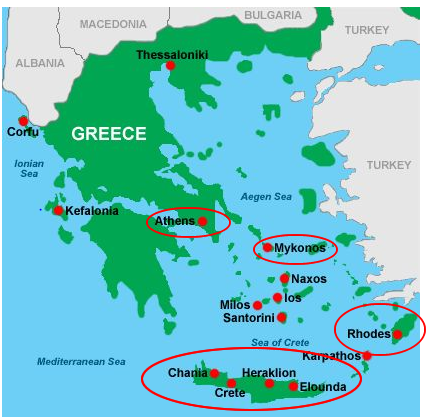
Rhodes - April 2
The island of Rhodes is at a crossroads between Europe, the Middle East, and Africa. The city of Rhodes, which is where we moored, was on the major sea routes starting in 4000 BC. Although it traces itself to the Greek classical period it was invaded and conquered by many different empires. The Turks were here after the crusaders and converted all the churches to mosques, which were converted back to churches when in 1912 Italian troops took the island over with the rest of the Dodecanese Islands. It remained under Italian control, until the Germans occupied it after the Italians dropped out of the war. It was eventually bombed by the British. In 1948 Britian awarded Rhodes back to Greece. Below is pictured the harbor as it looks today. Note the fortress that is a crusader remains.
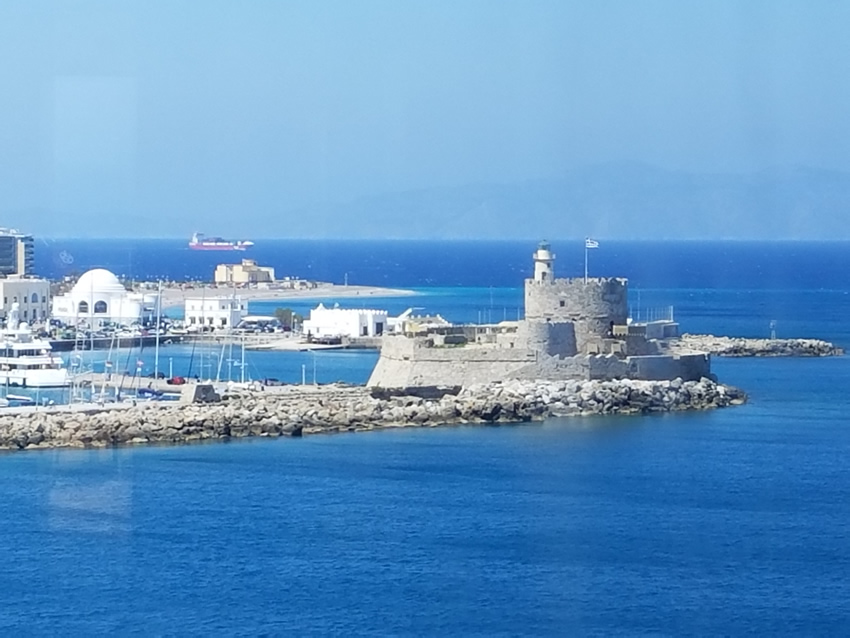
Rhodes Harbor in Rhodestown was the site of the legendary Colossus of Rhodes, one of the ancient 7 wonders of the world. Including its marble pedestal it stood 160 feet high and could be seen for miles by ships at sea. Unfortunately, the Colossus only stood for about 56 years before it was brought down by an earthquake. It remained where it fell for 875 years until Arab invaders pillaged its remains.
In 2016 a consortium of European architects, engineers, and archaeologists proposed to build a 21st century version of the Colossus. It would stand 500 feet tall and serve as a lighthouse and cultural center. Don’t make a reservation to see it just yet, the cost is $300 million which has yet to be raised.

Although moored in Rhodestown, we visited the city of Lindos (in the middle of the right side), which is on the southeast part of the island. The attraction here is an acropolis which was fortified successively by the Greeks, the Romans, the Byzantines, the Knights of St John ,and the Ottomans. It is worth noting that all Greek cities with a high hill with a citadel or complex built on it. The most famous one is in Athens. Below is the fortress in Lindos on Rhodes.

The town itself is very picturesque, and reachable by a one lane road that descends several hundred feet. In the town are many small shops and restaurants and many pedestrian lanes that are fun to explore. We also saw orange trees and one lemon tree.
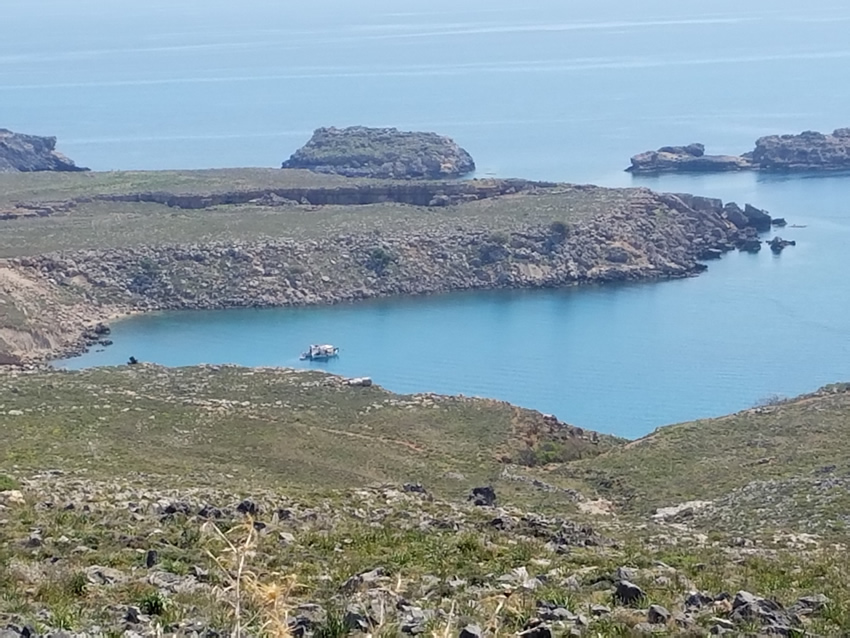
One of the many views from Lindos above and below.
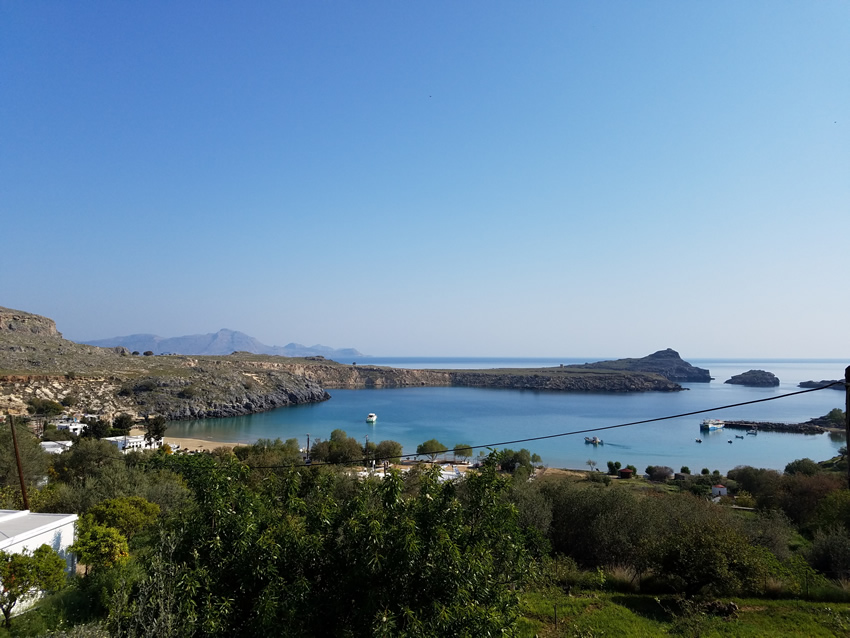
Athens April 3 & 4
Athens is the capital and largest city of Greece. It is one of the world's oldest cities, with its recorded history spanning over 3,400 years. Classical Athens was a powerful city-state that emerged in conjunction with the seagoing development of the port of Piraeus, which had been a distinct city prior to its 5th century BC when it was incorporatied into Athens. The most famous landmarks in Athens is of course The Acropolis on top of which are the remains of the Parthenon among other buildings.
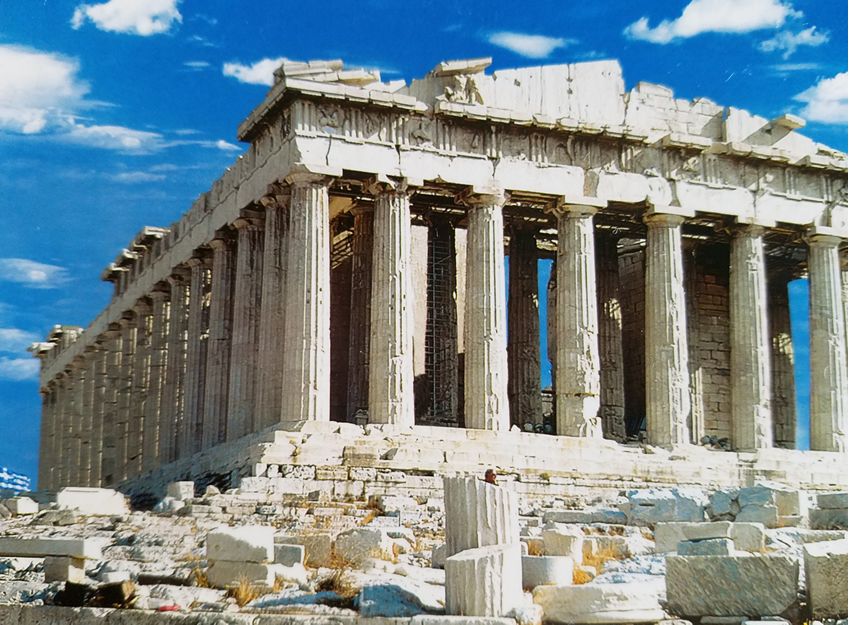
The Parthenon was built with money that the Athenians "sort of stole" from the Delian League. This was a league of Greek city states that banded together with a common treasury of contributions from all. The treasury was at first kept on Delos island, near Mykonos. However, the Athenians, being the most powerful member of the League, decided that the treasury should be moved to Athens because it was not safe on the small island of Delos. They then proceeded to use the money to build the Parthenon, in honor of the patron god of Athens, Athena.
The name of Athens (mother of the earth) derives from a myth that has Poseidon (god of the sea) and Athena, a competition to decide which of them should be the patron God of the city. In the competition, Poseidon threw down a bolt of lightning, and up sprang a salt water spring while Athena, brought the first olive tree. The city inhabitants decried that the salt water was worthless, but the olive tree was the hope for the future.
On the Acropolis, besides the Parthenon is temple called Erechthelion. A smaller building is on one side of it is a smaller building with the statues of six women called the Carytids. What is here today is copies, remains of five of the six are in the archaelogical museum in Athens and the sixth is in the British Museum in London. At the time that it opened, they and the Parthenon were brilliantly painted. Now all that remains is ivory colored marble.
Below is a view of Athens and the Acropolis that I stole from a postard. The Acropolis is in the circled area. The Orpheum is below it.
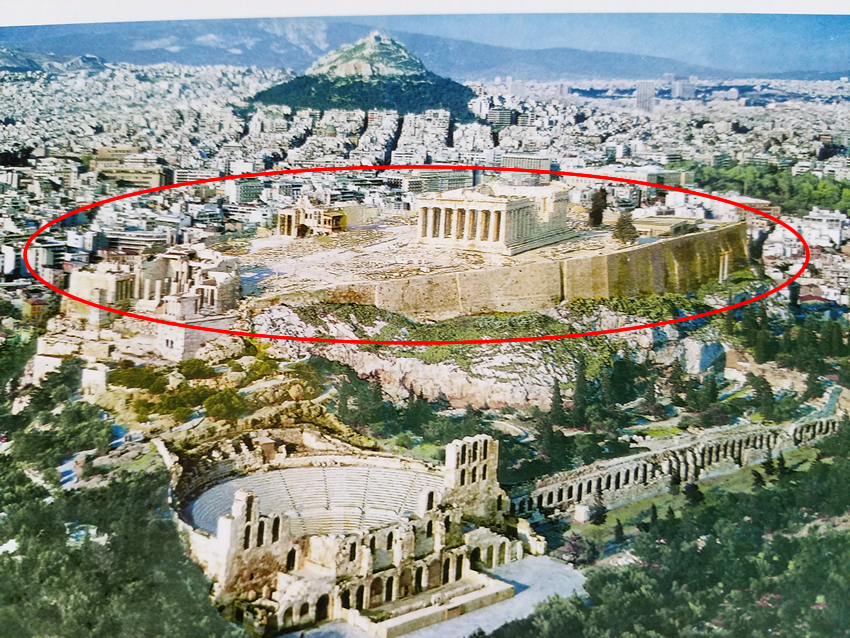
The only way to see the Acropolis (unless you are in a wheelchair in which case they have an elevator) is to climb the somewhat steep hill. The view and realization that you are standing in history itself is worth the trip. Greece is regarded as the birthplace of democracy. It is definitely the birthplace of our Western Civilization. One of the more interesting points about Greece is that when it fell to the Roman empire instead of the Roman culture predominating, the Romans took much of the Greek Culture.
The second day in Athens involved a trip to the Agora, which was the ancient market. In this area one finds ruins of the place where the trial of Socrates was held, and they suspect, where he took the poison. The story is that after being convicted of corrupting the youth by getting them to ask questions and not accepting the current ideas, he was accused of treason. Additionally, they said that he was promoting the idea of one god, an unknow God, which to the ancient Greeks was blasphemy.
Some of his prison guards offered him a chance to escape, but he declined. His reason was that he always told his followers to follow the law and the law was that he was to die. If he did not follow the law he said that he would lose credibility.
Below is a picture of where they think Socrates was tried. They also suspect that this is the area where he drank the poison.
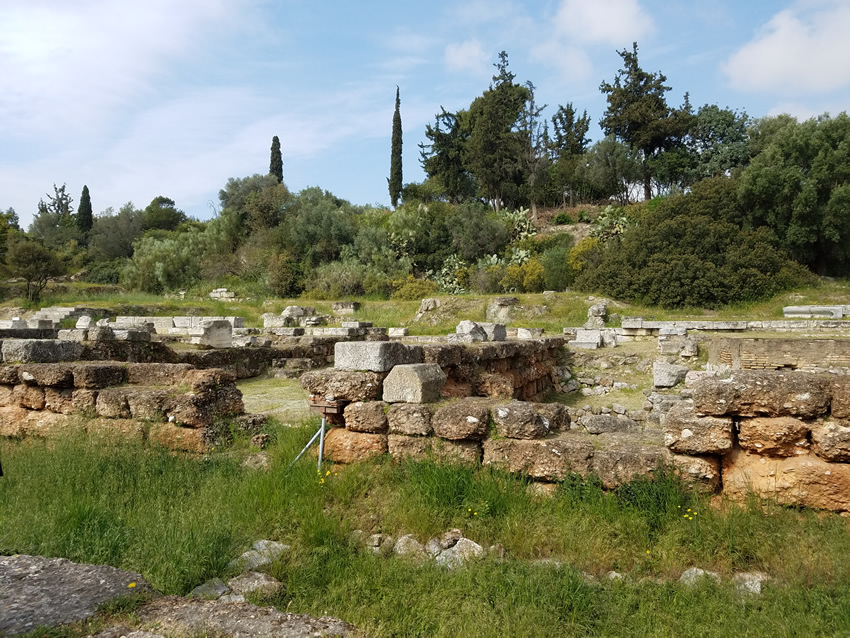 Near Near the Agora is a street of nothing but restaurants. This picture does not do it justice, picture this as far as the eye can see. All the restaurants have outdoor tables.
Near Near the Agora is a street of nothing but restaurants. This picture does not do it justice, picture this as far as the eye can see. All the restaurants have outdoor tables.

Athens is a city that needs to be walked. To experience it, one must walk on the sidewalk through outside restaurant tables and just enjoy the atmosphere.
Naphlion April 5
Naphlion, although it is still a part of the island on which Athens is, is separated from the mainland by the Corinth Canal.
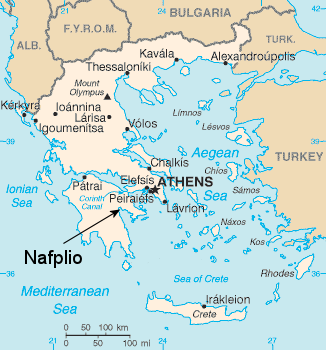
We had to anchor in the bay and “tender” (get into one of the lifeboats to get to shore) into the city of Naphlion. In this harbor stands a fortress guarding the city.

Being on a trade route, as expected, this area changed hands many times. The “group” that left the biggest marks on the city itself were the Venetians and the Turks. Both of these came and went at least twice. The city is now a resort town, which at this time of year, was not too crowded. It was fun to walk the many streets and experience the fragrances in various places. One can tell the buildings that were built by the Venetians because they have balconies, while those by the Turks, afraid that their women might be seen, have no balcony.
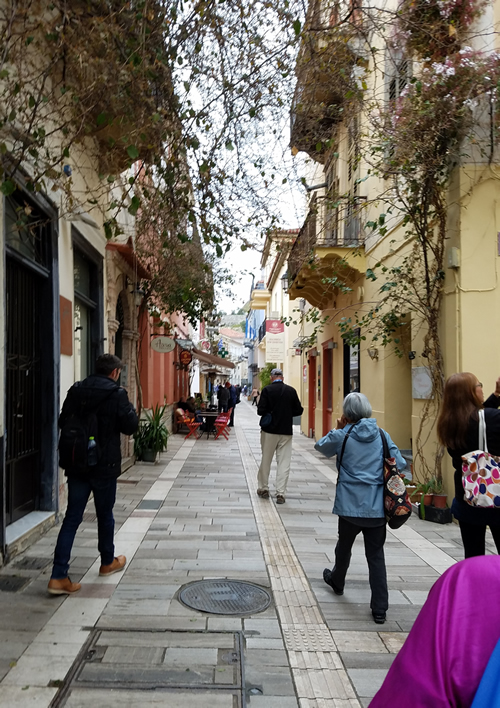
After exploring the city we bussed inland a little through orange groves and past olive trees to Palamidi Castle which sits on a 700 foot hill. It resides on their acropolis (note small a), which although is not the highest mountain around, had enough flat space at the top to build the castle. However, when I arrived at the top I could see that there was a big gully between the highest mountain and the castle, thus attacking from the other mountain was impossible.
Part way up the hill to the castle one passes through the Lion's Gate. This rests on a stone that weighs 6 tons. It was suppose to frightened any intruders.
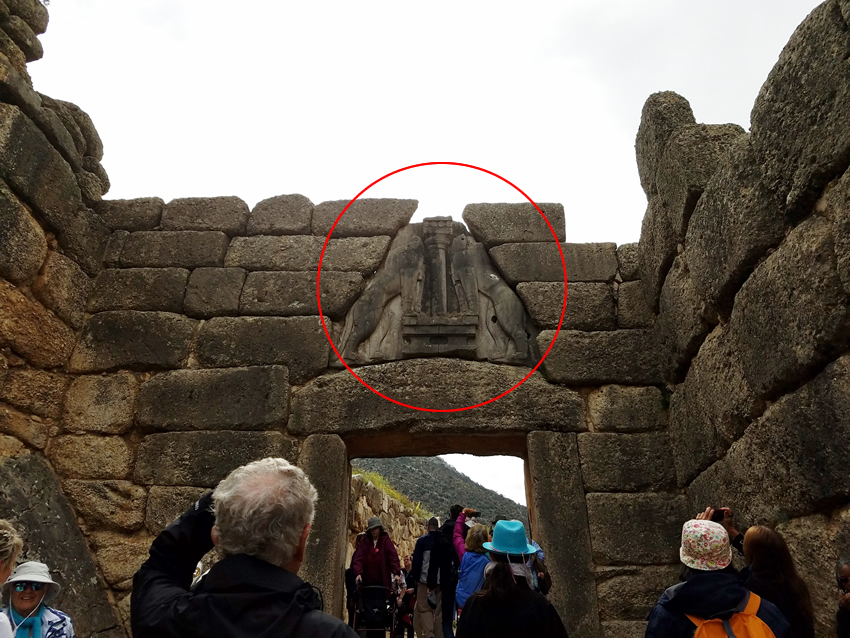
Like this area, the castle passed hands several times, with each conqueror making the city walls higher. Although it was a cloudy day, the views from on top were wonderful.

The Treasury of Atreus is also in this area. It is in a man made cave shaped like a bee hive inside a mound of earth. The sides are of what looks like cinder blocks (but of course are not). Originally they were lined with gold, which over the many centuries has disappeared.
Epidaurus, also in this area, was at one time a city filled with curative spas and baths dedicated to Aeclepius. the god of healing. There is an amphiteater here noted for its accoutistics which is built into the ground overlooking a valley. It was restored in 1954 and is used in the summer for verious dramas including the Greek classics and musicals. One of our group, who has sung at the Sydney Opera House, gave us a beautiful rendition of Amazing Grace to deomonstrate the acoustics. It was easily underst`andable from the 55th or top row. The theater seats 13,000! Below is only a partial view.

Crete/Iraklion
Crete is an island south of the Greek mainland that is the site of the ancient Minoan culture. It flourished during the Bronze Age about 1840 BC to 1350 BC before the Golden Period of Greece. The most important ruin on this island is the Palace of Knossos built on Kephala Hill with easy access to the sea and the interior of Crete.
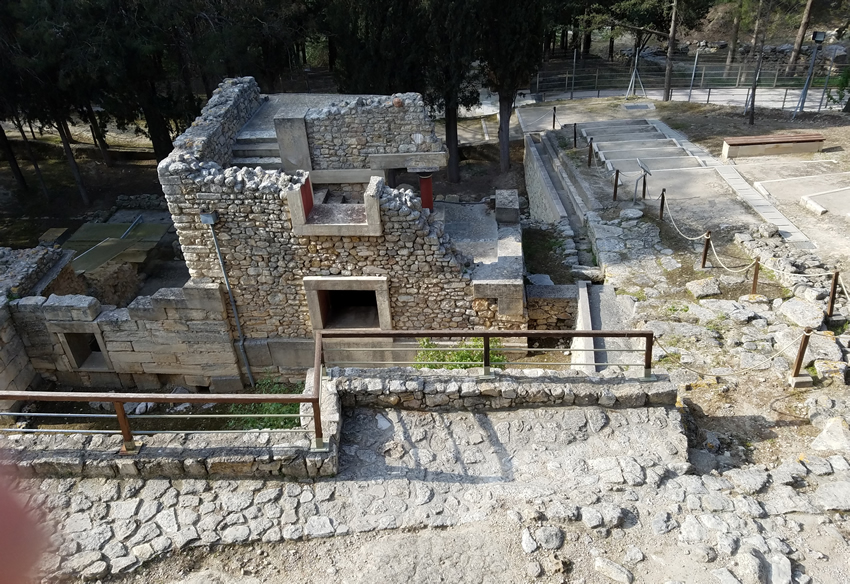
The above picture is a small part of the Palace that has been reconstructed.
Interestingly, there are no indications that this was a fortress, no walls that would protect the Minoans from attack. It is believed that they were a peace-loving people with no fear of attack.
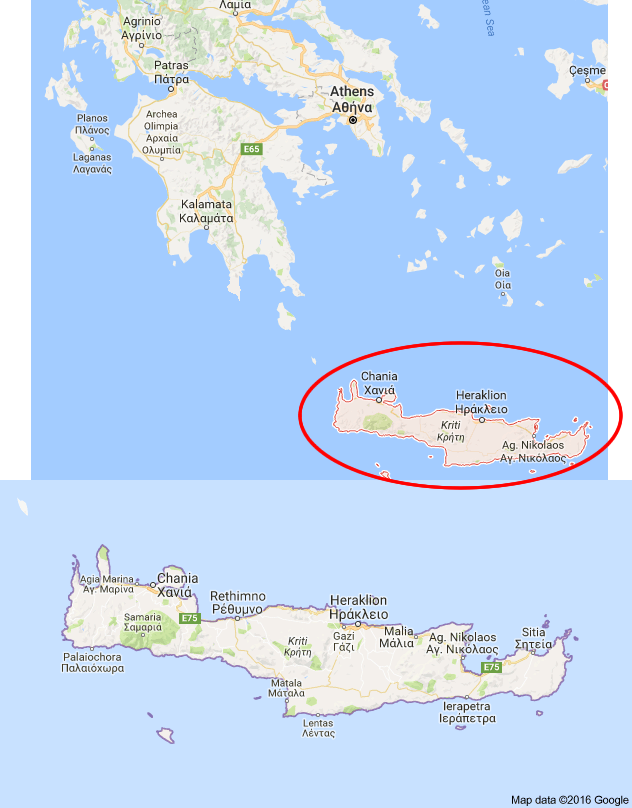
According to current beliefs it was the seat of the wise King Minos. What is not clear, however, is if Minos is the name that the Minoans had for their king, or if there was a standout king, probably the first one, named Minos. There are many myths from Greek mythology connected with this palace including the creation of the minotaur, a human body with the head of a bull who must be fed human meat.
The Minoans were sea farers and traded all along the Mediterranean Coast. Lacking a compass, they stayed pretty close to land, however, they did reach Egypt and no doubt traded with the Egyptians. One can see a similarity between Egyptian art and the Minoan art, in which only the side view of people are represented.
The palace was not just the residence of the King, but the meeting place, religious center, storage facility, and social center of the Minoans. It was built into a hill and was 3 stories in the front and 5 in the back. The ruins that we see today are the result of an Englishman, Sir Arthur Evans, who spent from 1900 to 1935 excavating them. We believe that it originally had 1000 rooms. They had running water from a spring 4 km away and a sewer system.
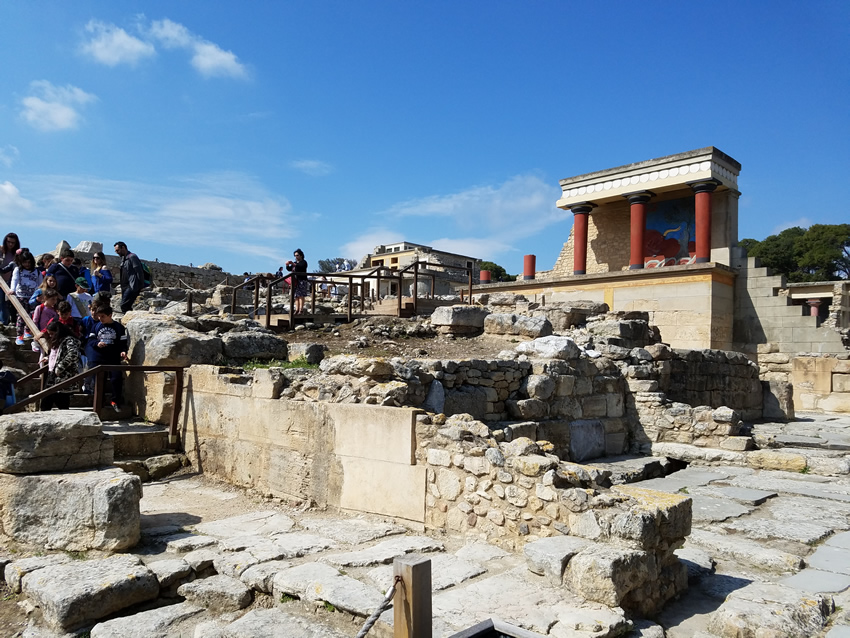
In the above picture, use the structure on th left as a refernce and use your imagination to give you some idea of th size of the Palace.
Earthquakes and fires destroyed the Palace 3 times. Although built of stone, the roof was wooden. What was uncovered by the archaeology dig was the remains of the third destruction. They surmise that there were fires in the palace, also olive oil was stored there. When things collapsed it is likely that the olive oil caught fire and created the final death knoll to the structure. We saw the remains of marble which was crystallized by the heat of the fire. After the third time, the Minoans did not have the resources to rebuild.
The Mycenas, a warlike people, about the time of the last destruction of the Palace, invaded and conquered the island. In recent times the island has changed hands between the Venetians and the Turks. By the time the Turks invaded in the early 1600s there was a sea wall, built by the Venetians, around the city. The citizens were under seige for 21 YEARS until a traitor told the Turks where the weak point in the wall was and they Suceeded in breaking the wall and conquering the city.

This point in this picture shows the weak point in the wall.
Unfortunately, Iraklion was bombed by the Nazis at the beginning of WW II and there are no original buildings standing there. Instead of conquering the city from the sea, they were the victims of the first air-borne invasion.
What is surprising is that the Turks allowed the presence of the Christian Churches as long as they were small. Like all of Greece, most of the population is of the Greek Orthodox faith. The Cathedral of St. Minas is a present day Greek Orthodox Church. There is no music in this church and no pictures of the Virgin Mary holding the Baby Jesus in her arms,. Any pictures of the Virgin Mary and Jesus show them face to face.

Iraklion is the largest city on Crete and is the location of the above Cathedral. It also houses an archaeological museum where any originals from the Palace are kept. Like all Greek cities, which we have visited, the city is built on hills and the white houses look stacked up on the hill. Iraklion has pedestrian only streets making it even more fun to walk the streets and look at the stores as well as the restaurants with outside tables.
Mykonos April 6
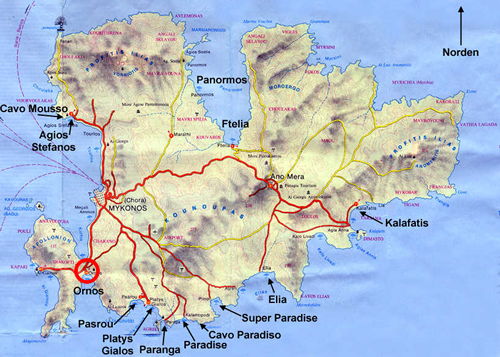
The circle indicates the city of Mykonos which is where we docked. After our tour this morning we were free to leisurely stroll through the city. Instead of taking the ship's shuttle back to the port, we took the sea bus. Great sport! Beautiful day, beautiful spot!
Mykonos' nickname is the "Island of the Winds," a well-deserved nickname. Following the pattern of Greek islands, Mykonos has a lengthy history. At various times it was ruled by the Romans, the Byzantines, the Venetians, and the Ottomans. Despite various rulers, up until the end of the 18th century, it prospered as a trading center and attracted many immigrants from nearby islands as well as regular pirate raids. During WW II it was occupied by the Italians, who destroyed all their boats from which their shipping industry has never recovered. Before this they grew barley and milled it into flour for export. During the occupation all their agricultural products were taken by the Italians for use in their own troops.
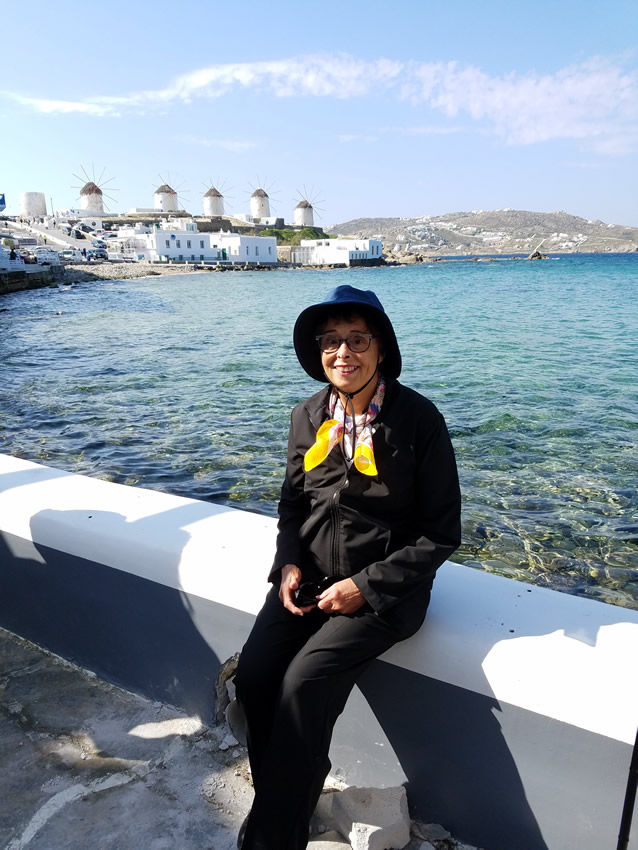
The windmills in the background at one time milled the barley that grew here.
Mykonos is a very small island, only about 25 square miles. There are many expats here, many of which just use this for a vacation. Their homes are on the other side of the mountain. The city of Mykonos surrounds the sea and has a wonderful sea wall and walkway around it.
All the houses in Mykonos are white. One does not have to paint their house white, but if you do not, you cannot connect to any services such as water, sewer, and electricity. In the winter the desert sands blow here from Africa and coat all the houses. By law, every spring, each home owner must first scrub the yellow sand dust off the house, then paint it. The effect you can see below in the stolen postcard picture.
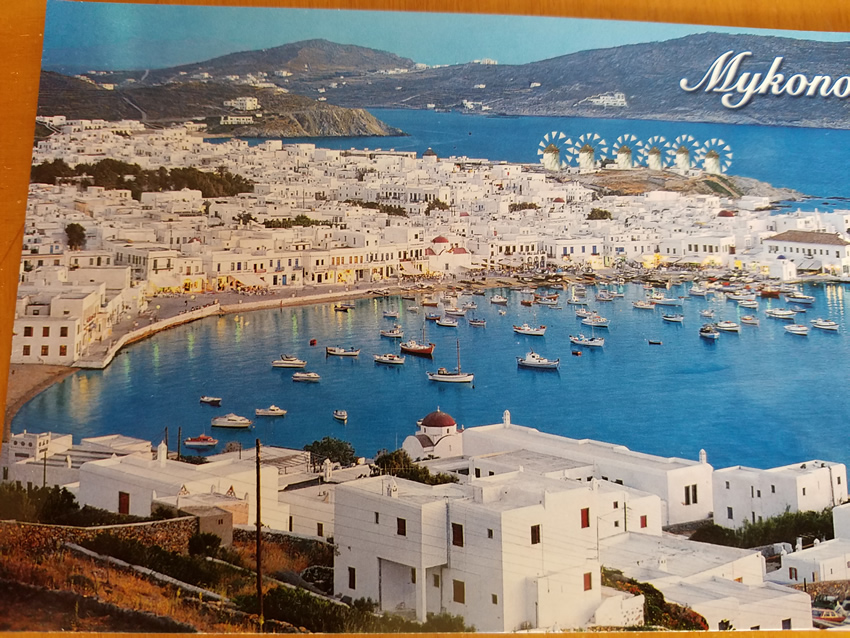
Besides the sea walk the real town consists of a labyrinth. Years ago, the North Africans use to invade the town and kidnap and sell into slavery in the North African markets the townspeople. Instead of building a wall the townspeople changed the town into a labyrinth of streets, from which it is virtually impossible to exit unless you are familiar with it.
There are no street names, or numbers anywhere. The locals know everyone who lives there, where they live, and act as one big family in taking care of each other. There was one street in this labyrinth that was so narrow, that one could only go through it sideways.
Our guide grew up here and guided us through many of the narrow streets. A nice thing was that there were no cars!
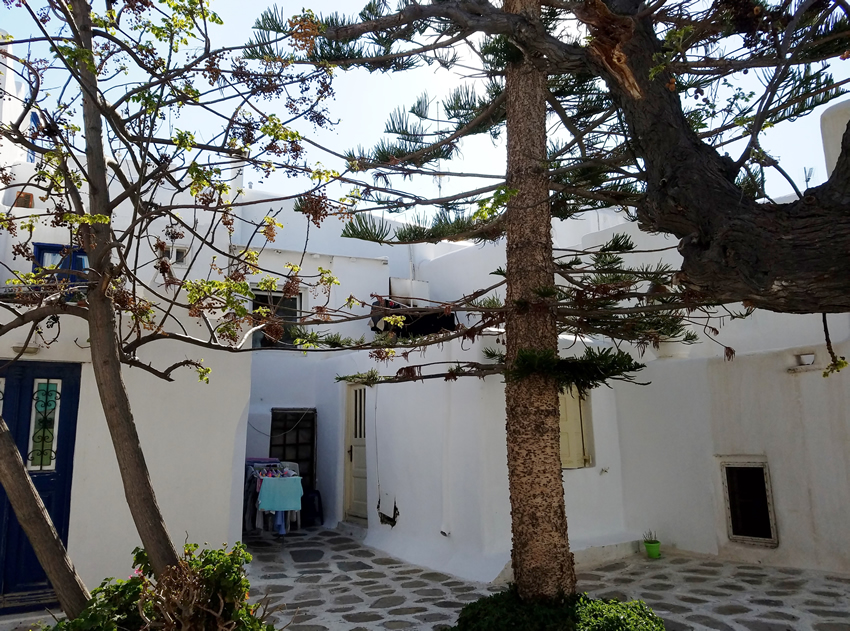
I tried to get a representative picture, but there are few alleys to give one a good perspective
The slavers would enter the narrow streets of the labyrinth, then the inhabitants would ambush them leaving them no way to escape.
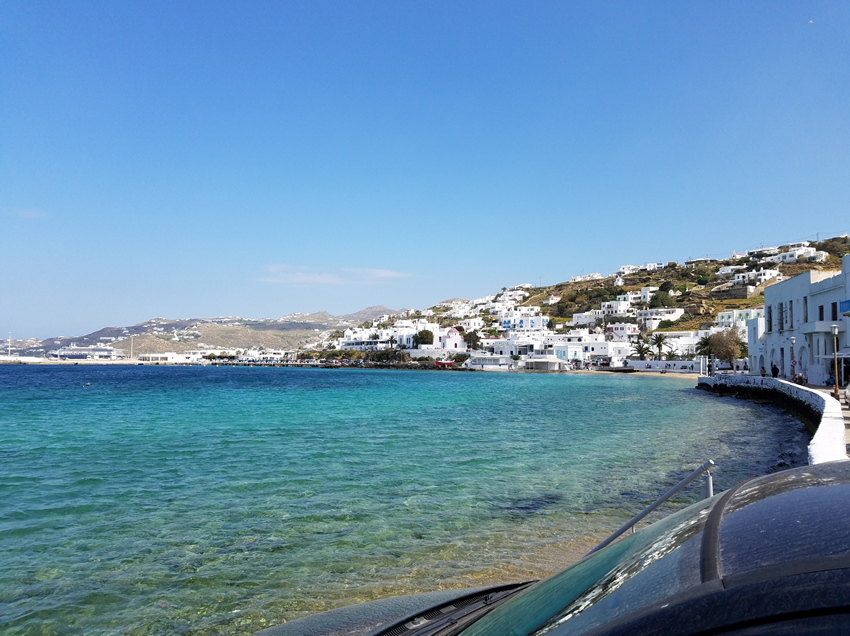
Just so you know that the postcard is realistic, here is a partial view that I took.
We were lucky on our visit, we were the only cruise ship in port. I don't want to think about what it must be like in the summer!
And so we say good-bye to Greece.